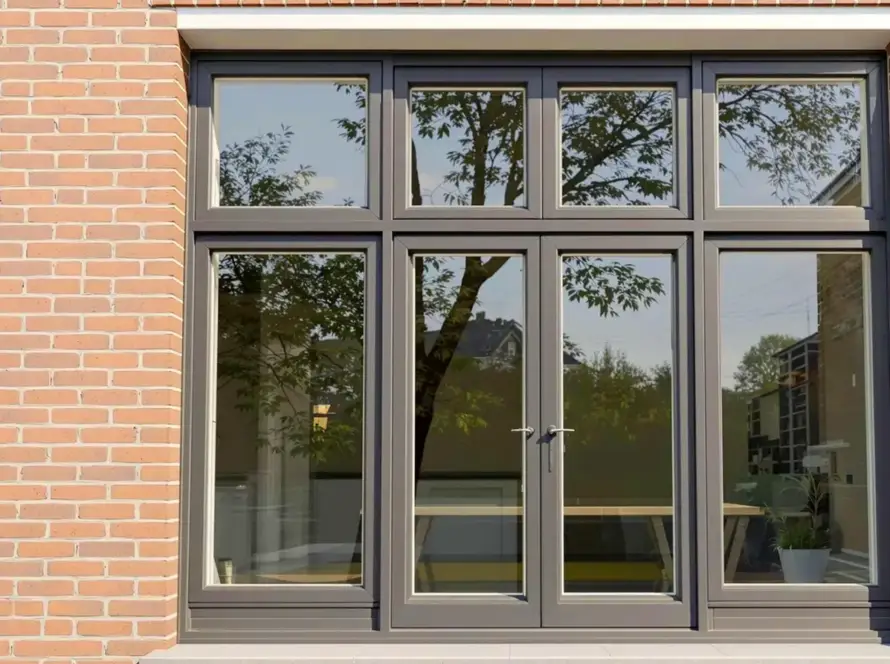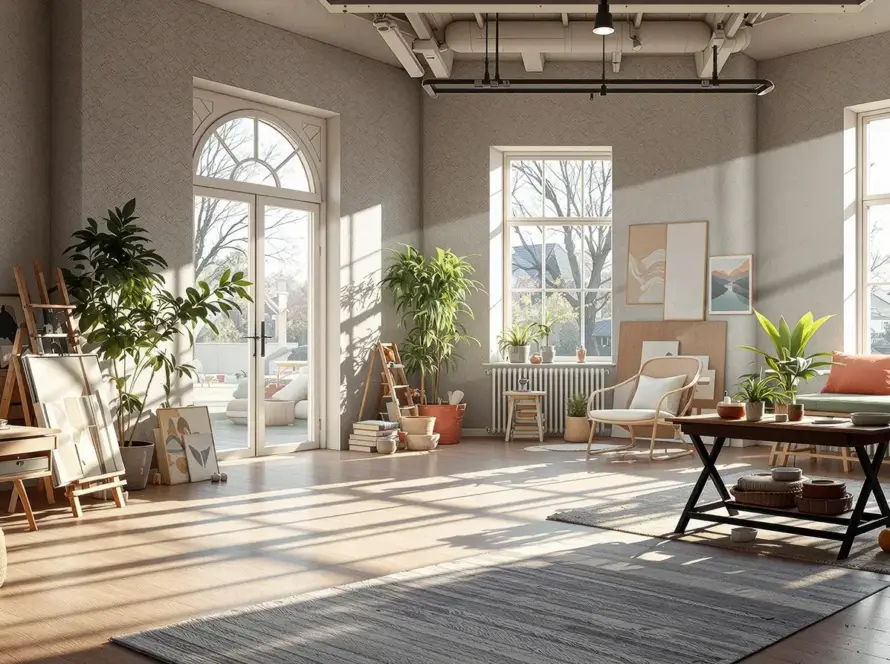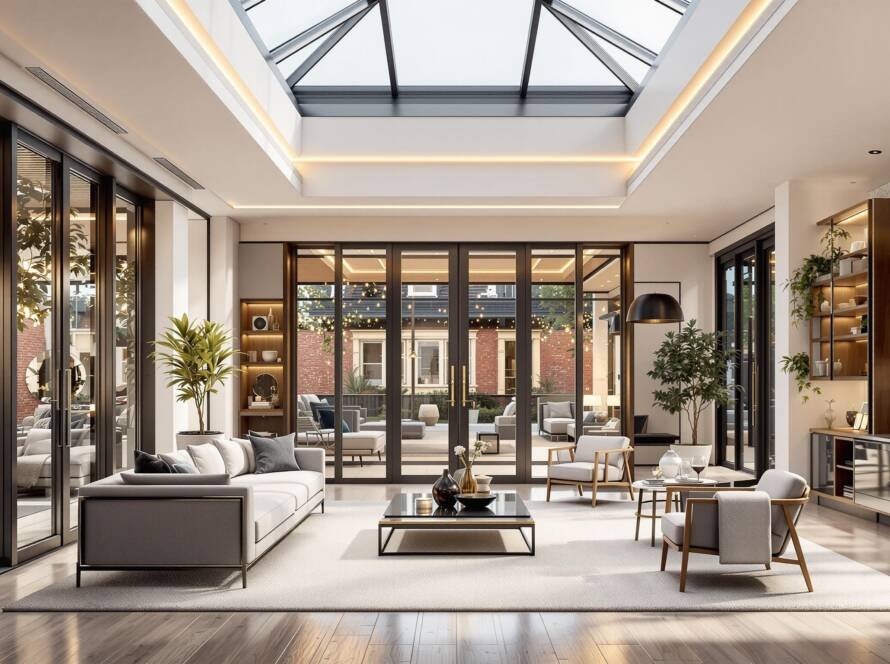“`html
Accessible Door Solutions: Designing for Inclusivity in Dutch Architecture
In the vibrant and evolving landscape of Dutch architecture, the conversation around inclusivity has taken center stage, particularly when it comes to the design and implementation of accessible door solutions. Whether you are embarking on a significant house extension, a comprehensive complete house renovation, or even smaller house renovations in the Netherlands, understanding and integrating accessible design principles is not just about compliance; it’s about creating homes that are welcoming and functional for everyone. This article delves into the nuances of accessible doors, exploring the essential concepts, current trends in construction and materials, and practical considerations for Dutch homeowners aiming for truly inclusive living spaces.
Basic Concepts: Understanding Inclusivity in Dutch Construction
Before diving into specific door solutions, it’s crucial to grasp the fundamental concepts that underpin accessible design in the Netherlands. These concepts are enshrined in Dutch building regulations and reflect a broader societal commitment to creating environments that everyone can navigate with ease and dignity.
What is Accessible Design?
Accessible design, also known as universal design, is a philosophy that aims to create environments, products, and services that are usable by all people, to the greatest extent possible, without the need for adaptation or specialized design. In the context of Dutch homes, this means designing spaces that accommodate a wide range of human abilities and disabilities, including those related to mobility, vision, hearing, and cognitive function. It moves beyond simply meeting minimum requirements to proactively anticipating diverse user needs.
The Importance of Barrier-Free Environments
A barrier-free environment is one that eliminates physical obstacles that can prevent individuals with disabilities from independently accessing and using spaces. For doors, this translates to considerations such as sufficient clear opening widths, appropriate threshold heights, and easy-to-operate hardware. In the Netherlands, the emphasis on barrier-free environments is not just a moral imperative but also a practical one, as it enhances the longevity and marketability of properties for a diverse and aging population.
Relevant Dutch Legislation: Het Bouwbesluit
The primary legal framework governing building accessibility in the Netherlands is Het Bouwbesluit (the Building Decree). This comprehensive set of regulations outlines technical requirements for new construction, renovations, and extensions. When planning a house renovation or extension in the Netherlands, it is imperative to consult the latest version of Het Bouwbesluit, specifically sections pertaining to accessibility. While not every private residence is subject to the same stringent accessibility requirements as public buildings, understanding these guidelines provides a robust framework for creating truly accessible homes. For instance, the Bouwbesluit often specifies minimum free passage widths for doorways and accessible routes, directly impacting door selection and placement.
Accessible Door Solutions: Types and Considerations
The market offers a variety of door types that can be adapted or chosen specifically for their accessible features. Understanding the pros and cons of each is vital for making informed decisions during your Dutch home renovation project.
Swing Doors: The Traditional Choice with Modern Adaptations
Swing doors are the most common type of door found in Dutch homes. While traditional, they require careful consideration to ensure accessibility. The key factors are clear opening width, hardware type, and sweep area.
- Clear Opening Width: For wheelchair users, a minimum clear opening width of 850-900 mm is generally recommended, although Het Bouwbesluit may specify different minimums depending on the building type and function. This is the unobstructed width when the door is open to 90 degrees, measured from the face of the door to the stop on the opposite frame. Ensure door frames and hinges do not reduce this critical measurement.
- Door Hardware: Lever handles are vastly superior to traditional doorknobs for ease of use, especially for individuals with limited dexterity or grip strength. Consider hardware with a return to the door to prevent snagging clothes or bags. Automatic door openers can further enhance accessibility, particularly for exterior doors or frequently used interior doors.
- Door Swing Direction: Plan the swing direction carefully to avoid obstructing circulation paths or creating hazardous conditions. Doors should ideally swing into a larger space where possible, allowing ample maneuvering room on both sides.
- Self-Closing Devices: While sometimes necessary for fire safety, self-closing devices must be chosen carefully. Look for models with adjustable closing force that can be set to a low resistance, or consider hold-open devices that can be released by a light touch.
Sliding Doors: Space-Saving and Visually Appealing
Sliding doors offer excellent space-saving advantages and can provide very wide clear openings, making them a popular choice for accessible design, particularly in smaller Dutch homes or for transitions between rooms and extensions.
- Pocket Doors: These disappear into a wall cavity, offering a completely unobstructed opening and saving significant floor space. Ensure the pocket is wide enough to accommodate the door fully and that the tracking system is robust and smooth-gliding. Accessible pocket doors should have flush or minimal-height floor tracks.
- Surface-Mounted Sliding Doors: These slide along the outside of the wall, either on a visible track or concealed behind a pelmet. While not as space-saving as pocket doors, they are easier to retrofit and still eliminate the door swing issue.
- Hardware for Sliding Doors: Large, easy-to-grasp handles or pulls are essential. Recessed pulls within the door panel can be challenging for those with limited dexterity, so consider extended pull handles or automated options.
- Disadvantages to Consider: Sliding doors may offer less acoustic privacy than swing doors. Also, it can be challenging to make them completely airtight, which might be a factor for energy efficiency in some applications.
Bi-Fold and French Doors: Aesthetic Appeal with Accessibility Challenges
While beautiful, bi-fold and French doors present unique accessibility considerations due to their multiple panels and opening mechanisms.
- Bi-Fold Doors: When fully opened, bi-fold doors can create very wide openings, ideal for connecting living spaces to gardens or extensions. However, the many panels and tracking systems can make them complex for some users. Ensure smooth-gliding hardware and consider the amount of force required to operate them.
- French Doors: French doors offer a classic aesthetic and can provide good clear openings when both leaves are open. However, operating two separate doors simultaneously can be challenging for some individuals. The threshold between the two doors should be kept as level as possible.
- Thresholds and Tracking: For both types, minimal or flush thresholds are paramount to prevent tripping hazards, especially when extending living space outdoors. Recessed tracks are ideal.
Trends in Construction and Materials for Accessible Doors in the Netherlands
The Dutch construction industry is continuously innovating, and this includes advancements in materials and technologies that enhance door accessibility, durability, and energy efficiency.
Smart Door Technology
The integration of smart home technology into door systems is a growing trend. This includes:
- Automated Openers: Sensors or remote controls can open and close doors, ideal for those with mobility impairments.
- Keyless Entry Systems: Biometric scanners (fingerprint), keypad entry, or smartphone-controlled locks eliminate the need for traditional keys, which can be difficult to manage for some.
- Voice Control: Integration with home automation systems allows for voice-activated door operation.
Sustainable and Durable Materials
Dutch homeowners are increasingly prioritizing sustainability and longevity. For doors, this means a focus on robust, low-maintenance materials that can withstand the Dutch climate and frequent use.
- Engineered Wood Products: Offer stability, resistance to warping, and can be sustainably sourced.
- UPVC and Aluminum: Excellent for exterior doors due to their low maintenance, durability, and insulation properties. They can be manufactured with extremely low and flush thresholds, which is a significant advantage for accessibility.
- High-Performance Glazing: For doors with glass panels, double or triple glazing improves thermal and acoustic insulation, contributing to overall home comfort and energy efficiency.
Integrated Threshold Solutions
One of the most critical aspects of accessible door design, particularly for exterior doors or transitions between rooms with different flooring levels, is the threshold. Trends are moving towards:
- Flush Thresholds: Creating a seamless transition between interior and exterior spaces, or between rooms, eliminates tripping hazards and allows for easy passage of wheelchairs, walkers, or prams. These often require careful detailing for drainage in exterior applications.
- Low-Profile Ramps/Bevels: Where a completely flush transition is impossible or impractical, a very low-profile ramp or a finely beveled edge on the threshold can mitigate the height difference safely.
House Renovations in the Netherlands: Integrating Accessible Door Solutions
Undertaking a house renovation or extension in the Netherlands offers a prime opportunity to embed accessible design principles directly into your home. This is often more cost-effective than attempting to retrofit later and results in a more cohesive and functional living space.
Planning Your Renovation for Accessibility
Early planning is key. Do not view accessibility as an afterthought. Engage with architects and builders who have experience in accessible design in the Dutch context.
- Assess Current Layout: Identify existing bottlenecks or inaccessible doorways in your home.
- Define User Needs: Consider not only current but also potential future needs of residents or frequent visitors.
- Consult Professionals: Work with an architect to design wider doorways, appropriate entry/exit points for extensions, and consider overall spatial planning for circulation.
- Budget for Quality: Accessible door hardware and systems might have a higher initial cost, but their durability and functionality provide long-term value.
Key Areas for Accessible Door Integration in Renovations
- Main Entrance: This is often the first point of contact and crucial for welcoming all visitors. Ensure a wide door, accessible handle, and a low/flush threshold from the pavement or driveway to the interior. Consider a covered entrance to protect from the elements, especially for those who need more time to enter.
- Bathroom Doors: Crucial for independence. Bathroom doors often need to be wider than standard interior doors to accommodate wheelchairs or walking aids, and for assistance if needed. Sliding doors are an excellent solution here.
- Bedroom Doors: Similar to bathroom doors, ensure sufficient width and easy-to-operate hardware.
- Transitions to Extensions: If you are building a new extension, design the connection point with accessibility in mind from the outset. This is where flush sliding or bi-fold doors can truly shine, creating a seamless indoor-outdoor flow.
- Garage or Storage Access: Ensure these secondary access points are also usable, particularly if they lead to frequently used areas.
Practical Tips for Implementing Accessible Door Solutions
Implementing accessible door solutions requires attention to detail and a proactive approach. Here are practical tips to guide you through the process:
- Prioritize Clear Passage: Always remember that the critical dimension is the clear opening width, not the nominal width of the door leaf. Account for hinges, door stops, and frame thickness when planning.
- Choose the Right Hardware: Opt for lever handles over knobs. Ensure locks are easy to operate, even with limited hand dexterity. Consider smart lock systems for keyless entry.
- Minimize Threshold Heights: Aim for flush thresholds wherever possible, especially at exterior doors and transitions between living areas. If slight variations are unavoidable, use gently sloped or beveled transitions.
- Consider Door Operation Force: Ensure doors open and close with minimal force. This is particularly important for fire-rated self-closing doors, where adjustable closers are crucial.
- Factor in Maneuvering Space: Beyond just the door width, think about the clear floor space required on both sides of the door for someone using a mobility aid to approach, open, and pass through the doorway. This is especially vital in hallways and tight corners.
- Match Aesthetics with Functionality: Accessible doors do not have to compromise on style. Many manufacturers offer a wide range of designs, materials, and finishes that blend seamlessly with modern or traditional Dutch architectural styles.
- Regular Maintenance: Ensure that door hinges are well-lubricated, tracks are clean, and hardware is functioning smoothly. Regular maintenance prevents issues that could impede accessibility.
- Consult with Specialists: Do not hesitate to involve consultants specializing in universal design or accessibility audits. They can provide invaluable insights and ensure your plans meet all relevant standards.
Conclusion
Designing for inclusivity in Dutch architecture, particularly through accessible door solutions, is a vital step towards creating truly future-proof and welcoming homes. Whether you are undertaking a significant house extension, a complete renovation, or smaller modifications, the principles of universal design should be at the forefront of your planning. By understanding the relevant Dutch regulations (like Het Bouwbesluit), exploring modern material and technology trends, and applying practical design considerations, you can transform your Dutch home into a space that embraces independence, comfort, and safety for everyone, regardless of their mobility or abilities. Invest in accessible door solutions, and you invest in the long-term liveability and value of your property, contributing to a more inclusive society one home at a time.
“`




